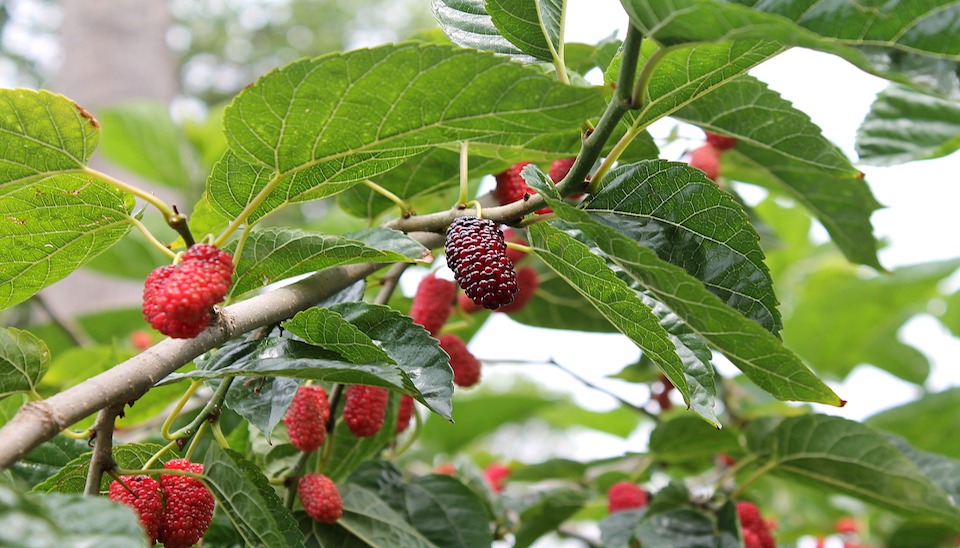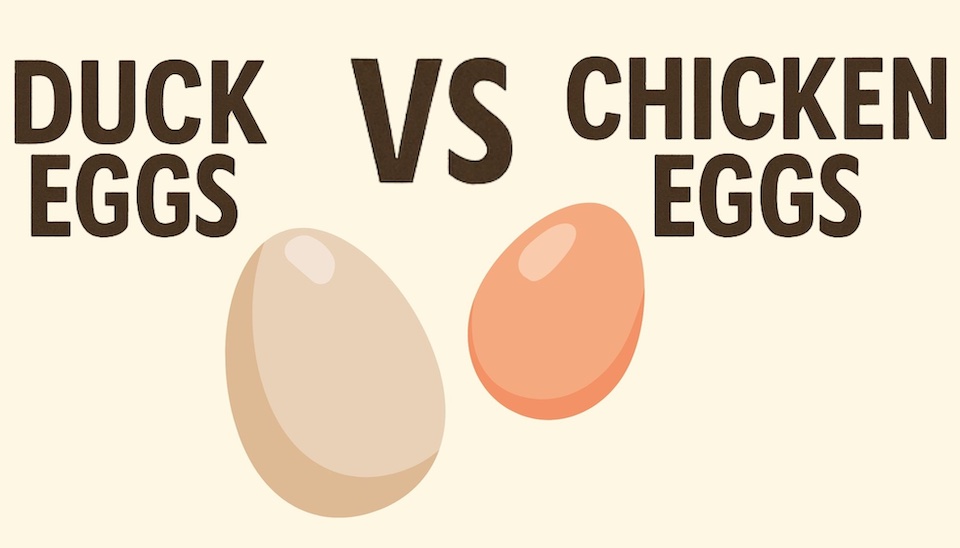The Best Dual-Purpose Plants for the Chicken Run
Dine a Chook's Top 10 Plants for the Chicken Run
Chickens with access to forage, interesting hiding places and plenty of shade, are happier, healthier and more productive.
Choosing plants that serve multiple functions in the chicken run is a great way to save time, space and money! Keep your chickens happy with our favourite dual-purpose plants for the chicken run. These plants provide shade, forage, hiding places and amusement for your chickens.
The beginning of summer isn't the best time for planting, but you know what they say: The best time to plant a tree is yesterday. The second best time is right now. Besides, if you plant now most plants will be well-established and providing shade by next summer!
Here's our top 10 best plants for shade and forage in the chicken run.
The 10 best dual-purpose plants for the chicken run
1. Mulberry
Mulberries will grow in most areas of Australia, producing a large shady tree with plenty of nice hiding spots for chickens. Because mulberries are deciduous, they allow sunlight into the run in winter, helping to prevent parasite build ups in the soil.
Chickens love mulberries and will quickly clean up any fallen fruit, as well as munching on the leaves. Mulberry trees appreciate the fertiliser the chickens provide too!
2. Moringa
Moringa oleifera will grow everywhere from the tropics to semi-arid areas. It is fast-growing and, like mulberries, also deciduous. Moringa trees are often used as a hedge or windbreak.
Moringa is sometimes called the 'miracle tree' because all parts of the plant are edible. The leaves contain up to 38 % protein, making them excellent forage. There are many scientific studies looking at moringa and most have found that, when fed to chickens, it improves performance and health.
3. Banana
Chooks love bananas. They also love foraging among banana trees, which seem to stand up well to the scratching. Our chickens even eat the banana suckers, which helps keep the plants in check.
Banana trees love rich, moist soil. They tend to thrive in the chicken run, especially if they are situated to catch the run-off from the coop. Bananas provide excellent shade and can be used as a windbreak or coop insulation.
Spent banana plants are most often cut down. The decomposing trunks can be left in the run to become excellent habitat for insects, adding another foraging opportunity to the coop.
4. Choko
Chokos love rich soil, so they are another plant that will thrive in the coop run-off. They do need a strong structure to grow over, as they’ll pull down your average chicken wire fence. But if you have a solid, old-fashioned chicken coop (for example, steel and corrugated iron) then it’s perfect for a choko vine.
Growing a choko over your chicken coop (if your coop is strong enough) provides insulation from extremes of heat and cold, as well as extra shade in summer. Chooks like to eat the leaves and growing tips of the plant. If your chooks won't eat the chokos raw, try cooking them.
5. Tree lucerne
Tree lucerne is a fantastic plant for temperate areas. It tends to have drooping branches, making nice little caves for chickens to hide in. The leaves contain 20-24 % protein, making them excellent forage. Tree lucerne is also great for bees but it really isn't suitable for heavy soils and tropical or subtropical climates.
6. Tamarillo
Tamarillo is a quick-growing, shrubby tree that will provide dappled shade. It produces fruit within a couple of years. With the correct pruning, a tamarillo can be encouraged to branch or sprout multiple trunks, like a pomegranate, for chickens to hide within. Tamarillo's are a relatively short-lived tree.
7. Lemon grass
If our chickens have a favourite nesting place, it’s definitely under the drooping leaves of the lemon grass. Don’t let that put you off though! This quick-growing grass provides excellent shade in summer and enough weather protection that we had a chicken raise a brood of 16 in there, undetected and perfectly healthy!
Lemon grass establishes easily, with roots strong enough to hold off foraging, scratching chickens. The chickens don't love the forage, but the shade benefits and hardiness make lemon grass a worthwhile plant in the chicken run. The grass can also be cut for mulch.
8. Arrowroot
This clumping plant looks a little like a canna lily. It grows well in full-sun in tropical and subtropical areas. Chickens enjoy the leaves and, once established, the plants will stand up to foraging and scratching. The clump of arrowroot is one of our chooks' favourite places on a hot day!
Arrowroot will grow in part-shade, so it is an excellent option for planting under trees to create multi-layered shade.
9. Passionfruit
Like chokos, passionfruit vines need a very sturdy structure to grow on. They aren't the chooks favourite forage option, but the vines love rich chicken run soil and, if they are in a sunny spot, they will reward you with plenty of shade and fruit. Passionfruit is harvested when it falls to the ground, so get up early if you want to beat your chickens to the tasty fruits!
Like chokos, passionfruit vines can provide excellent shade and insulation for the chicken coop.
10. Wattle
Not all wattle seeds are edible, and some are actually poisonous. But any of the wattle varieties that are used for human consumption are also good for chickens. The seeds are high in protein and the hardy plant will provide good dappled shade.
There are wattles native to all areas in Australia, so it is recommended to get a variety from your area. This is better for your local wildlife and the plant will perform better. If you visit a local native plant nursery, they will be able to advise you on which wattle varieties are edible and local.
Tips for planting trees in the chicken run
When planting in the chook run, keep in mind that chickens will scratch up pretty much anything, and particularly newly planted earth and mulch. So no matter what you plant, it will need protection. Only large, well-established plants can survive chickens without protection!
Different plants need different types of protection. Chickens can eat some plants, like lettuces, to death, but the vines and trees we have chosen will survive foraging chickens (as long as they are being fed appropriately!) once they are established. But all plants need root protection until they are established, and until ground cover is established underneath them. Some plants might need protection from chickens flying up into them until they are established too.
Protect your plants by:
- Planting them just outside of the chicken run, where they will still provide shade and forage as they grow, but are protected from scratching
- Taller plants that chickens can't damage by flying into can be protected by wire mesh, or even piles of wood or branches, on the ground around the plant to stop chickens from scratching up the roots
- A PVC tube, a wire mesh fence, a dog's safety collar from the vet, or even an old bucket with the bottom cut out can protect the roots of a plant
- Bird netting on a poly pipe frame is another good way to protect trees in the run during their first year or so. Just ensure you make the enclosure bigger as the tree grows!
Chickens will eat some plants to death. But most of these trees and vines are large enough to stand up to foraging chickens once they are established.
More DIY ideas for the chicken coop
Happy chicken keeping!
Rachael at Dine a Chook Australia



